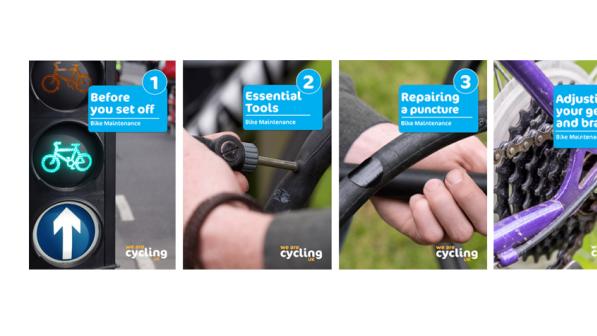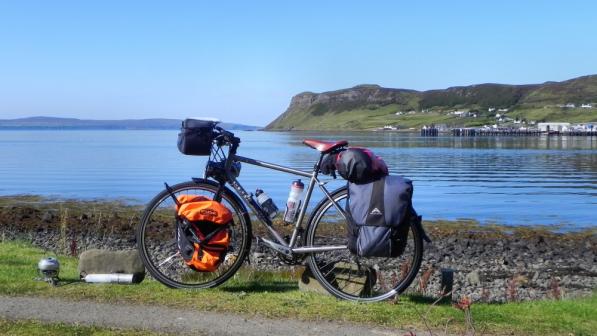How to sell your cycle
Selling your cycle can be as fraught with complications as buying a second-hand one. There are all sorts of things to consider: how to set a fair price, where to find buyers, how to write a winning description, to name just a few.
I looked at these questions and more, providing you with a comprehensive guide to successfully selling your bike.
The price is right
The first thing to do is set a fair price. Too high and you’ll struggle to get a sale, too low and you’re doing yourself down. If you’re keen to sell quickly, a lower price will help, but don’t set it so low that potential buyers question if the bike is really yours (more on that later).
Find out what your particular make and model is selling for elsewhere – known as benchmarking – and set your price accordingly. Check online resale sites to see what other sellers are asking for and then take into consideration age, condition, any previous damage and servicing history of your own machine.
Compare different sellers on different sites and pitch your own price accordingly. But be realistic. Your bike might be your pride and joy, but that means nothing to a prospective buyer. Sentimental value doesn’t translate to cash value.
Think about who your buyer is – someone looking for a high-end road bike is going to be willing to pay more than someone in the market for a run-about.
Where to sell
There are lots of options when it comes to where to sell your bike and it’s a good idea to try more than one.
In person
You could go old school and take your bike to a local bike shop. This is quick and easy, but keep in mind that you probably won’t get the best price. If you’re looking to upgrade, though, it could be used in part exchange.
Asking friends, family or your local cycling club (if you’re a member) could reveal someone in the market for a second-hand bike. This is another quick, easy and safe way of selling. People in your social circle will be aware of your bike’s wear and tear and how well you’ve looked after it – which could be good or bad!
However, if anything goes wrong or your friend decides to haggle over the price, things could get awkward. Many friendships have been lost over disagreements about money.
Online marketplaces
There are several of these. The biggest and best known is eBay. This will give you access to the biggest number of potential buyers, but you’re also up against a lot of sellers.
You can either set a price using the Buy it Now option or use the traditional auction. If you go for the latter, you might get lucky if someone really wants your bike and is prepared to pay over the odds. However, the site charges for each listing and takes a 20% cut of the final price.
Sites such as Facebook, via Facebook Marketplace or a local Sell or Swap or cycling page, Gumtree and Preloved don’t charge to list. Some services do accrue a charge, but this will be flagged up before you commit to spending.
All these sites give access to a nationwide pool of buyers, but this means you’ll have to consider delivery. Even if the buyer is paying for this, you’ll have to make sure the bike is properly packaged up and delivered in a timely manner.
Cycling-specific marketplaces
These include bikesoup, Going Going Bike and Bike-Room. There are also cycling forums such as Cycling UK’s own which will have sections for buying and selling cycles.
These will have a much more limited reach compared to the general sites. However, users will be more knowledgeable about what they want and what they’re prepared to pay, so you’re more likely to get your asking price, especially with high-end machines.
The write stuff
Unless you’re an advertising copywriter, writing the perfect sales pitch for your bike is going to be challenging. The trick is to think about what information you would want to see in a sales ad and cover all that.
Be positive but honest. If your bike has damage, say so. There is no point claiming it’s in perfect condition if it’s not. As soon as a potential buyer sees the bike they’ll know you’ve misled them – and no doubt wonder if you’ve lied about anything else. It’s a waste of your time and theirs.
Include as much information as you can, but be specific. A buyer wants to know things like make, year and size, not all about that fantastic fundraising ride to Paris – although information about usage is helpful. Always include the price. A buyer wants to know what the bike will cost them; vague comments like ‘offers considered’ will just put people off.
Cover: brand, type of bike, colour, year, size (you can include your own height and a link to the manufacturer’s size guide), components (along with familiar brand names), any previous owners, servicing and repairs history, and condition of frame and components, along with any damage and if the bike has been involved in a collision.
If you can, carry out any basic repairs, but if the bike needs more work, be up front about it.
When it comes to the headline, think about search engine optimisation. ‘Cannondale bike for sale’ isn’t going to cut it. Instead try something like ‘Great condition Cannondale Cujo 3 mountain bike for sale’.
What a picture, what a photograph
Photos are essential, and they should show your bike at its best. Be sure to clean your bike in preparation for its photoshoot. A dirty bike just looks badly looked after, and buyers may wonder what’s hiding underneath all that mud. Choose a plain background that doesn’t distract from the bike.
Take lots of photos! These should be good quality, outside and in good light, taken from several angles. It shouldn’t need saying, but don’t use stock photography – show people what they’re actually buying.
Include close-ups of components: fork, shock (if applicable), wheels and tires, bars, grips, stem, saddle, post, brakes and levers, shifters, derailleurs and cranks. Highlight any scratches, nicks or gouges; you can use a coin to show the relative size of any damaged areas.
Safety measures
Once you’ve got an interested buyer, there are a few steps to help ensure the sale goes through safely and to everyone’s satisfaction.
Your bike should be in a decent condition. As well as cleaning, you should give it some basic maintenance, repairing or replacing worn out parts.
It might be too late for this, but ideally you’ll have proof of purchase to show a prospective buyer. If you originally bought the bike online, you might be able to retrieve the receipt. Wiggle, for example, saves details of orders in your account for several years.
If the bike is logged on a security site like BikeRegister, download the details to show the buyer. Receipts and paperwork from any servicing and repairs can also be useful. You wouldn’t buy a second-hand car without a logbook or service history so it’s good practice to offer the same when selling a cycle – especially if it’s an expensive one.
If you’re selling to a stranger, meet in a public place; it’s also a good idea to take someone with you. It’s best to avoid inviting buyers to your house. Thieves in the US have been known to answer Craigslist ads in order to scope out houses worth stealing from.
Keep in mind that this isn’t a regular occurrence – it’s just best to be aware of the possibility. Also, any potential buyer will have been given plenty of warning about meeting you!
It’s perfectly reasonable for a buyer to want to test ride the bike before committing to a purchase. But it’s also very easy for a thief to ride off into the sunset, never to be seen again. Meeting in a public place makes this harder, but you should also insist on taking ID and a deposit, and keep buyer and bike in sight.
Finally, make sure you get paid before letting the bike go. Cash is safest and it’s best to avoid cheques, which can bounce or be cancelled. Never ship a cycle anywhere before the payment is safely in your account. These days it’s possible to do a bank transfer immediately and safely through various apps.
Enquire about how the buyer is planning to pay prior to meeting. This way you’ll avoid any awkward moments when the buyer pulls out a chequebook.
You should now be armed with all the information you need to sell your bike. Now the only question is what are you going to do with the cash? Another bike maybe …


